What Is an Electrical Transformer Box? Everything You Need to Know?
Have you ever noticed those large metal boxes in your neighborhood and wondered what they do? These mysterious containers play a crucial role in powering our homes and businesses, but many people don’t know what they are or how they work.
An electrical transformer box is a protective enclosure that houses a transformer, which changes voltage levels in electrical power distribution systems. These boxes are essential for safely stepping down high voltage electricity from power lines to usable levels for homes and businesses.
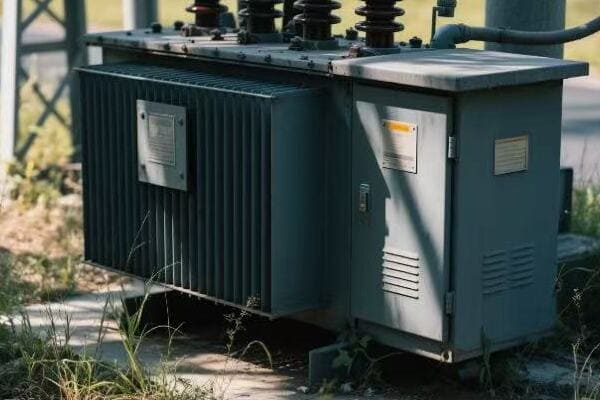
In this article, I’ll explain what electrical transformer boxes are, how they work, and why they’re so important for our power infrastructure. Whether you’re a curious homeowner or someone interested in electrical systems, this guide will help you understand these vital components of our electrical grid.
The Basics of Electrical Transformer Boxes: Function and Importance in Power Systems?
Have you ever wondered how the high-voltage electricity from power plants becomes safe to use in your home? The answer lies in those unassuming metal boxes you see around your neighborhood. But what exactly do these transformer boxes do?
Electrical transformer boxes house transformers that step down high voltage electricity to lower, safer levels for local use. They act as crucial intermediaries between the power grid and end-users, ensuring efficient power distribution and protecting equipment from high voltages.
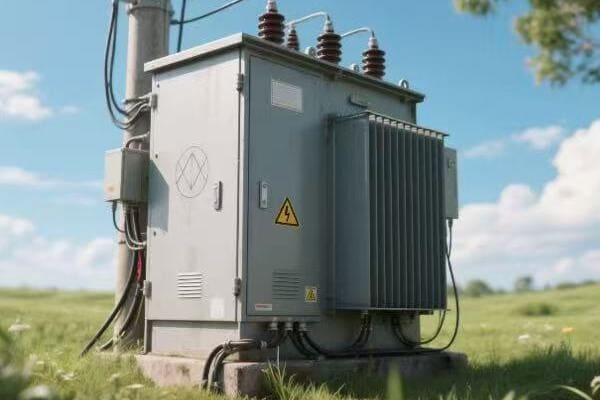
Understanding Transformer Boxes
Let’s break down the key aspects of electrical transformer boxes:
Primary Function
The main job of a transformer box is to protect and house the transformer inside. This transformer does the critical work of changing voltage levels. Here’s how it works:
- High voltage electricity enters the transformer
- The transformer reduces the voltage to a safe level
- Lower voltage electricity exits for use in homes and businesses
I once explained this concept to a group of students using a water analogy. I compared high voltage to water at high pressure in main pipes, and the transformer to a pressure reducer for home use.
Importance in Power Systems
Transformer boxes play several crucial roles:
- Safety: They isolate high voltage equipment from public access
- Protection: They shield transformers from weather and physical damage
- Efficiency: They allow for efficient power distribution over long distances
- Voltage Regulation: They help maintain consistent voltage levels in local areas
Components of a Transformer Box
A typical transformer box contains:
- The transformer itself
- Insulating oil or dry-type insulation
- Cooling systems (for larger units)
- Protective devices like fuses or circuit breakers
- Bushings for electrical connections
Here’s a table showing typical voltage levels in power distribution:
| Stage | Voltage Level |
|---|---|
| Transmission Lines | 69,000 – 765,000 V |
| Primary Distribution | 4,000 – 34,500 V |
| Secondary Distribution (to homes) | 120/240 V |
In my experience, the importance of transformer boxes is often underappreciated. I remember a project where we were upgrading the power infrastructure in an older neighborhood. The residents were amazed to learn how these unassuming boxes were crucial to delivering stable power to their homes.
One interesting aspect of transformer boxes is their role in power quality management. In urban areas with high power demand, we often install multiple smaller transformer boxes instead of one large unit. This distributed approach helps maintain voltage stability and reduces the impact of any single transformer failure.
Another crucial function of transformer boxes is their role in electrical isolation. They create a barrier between the high-voltage distribution system and low-voltage consumer networks. This isolation is vital for safety and helps prevent issues in one part of the grid from affecting others.
Transformer boxes also play a key role in energy loss reduction. By stepping down voltage close to the point of use, they minimize the distance that low-voltage (and thus higher current) electricity needs to travel, reducing overall system losses.
As our power needs evolve, so do transformer boxes. In recent years, I’ve worked on projects integrating smart technology into these units. These smart transformer boxes can communicate with the grid, adjust to changing loads, and even help integrate renewable energy sources.
Understanding the basics of electrical transformer boxes helps us appreciate the complex infrastructure that powers our daily lives. These unassuming metal containers are the unsung heroes of our electrical system, working silently to ensure we have safe, reliable power at our fingertips.
Inside the Box: Key Components and How They Work Together?
Have you ever wondered what’s inside those mysterious electrical boxes in your neighborhood? The inner workings of a transformer box might seem complex, but understanding its key components can demystify this crucial part of our power infrastructure.
Inside an electrical transformer box, you’ll find the transformer itself, along with insulation, cooling systems, and protective devices. The transformer core and windings are the heart of the system, working together to change voltage levels. Other components ensure safe, efficient operation.
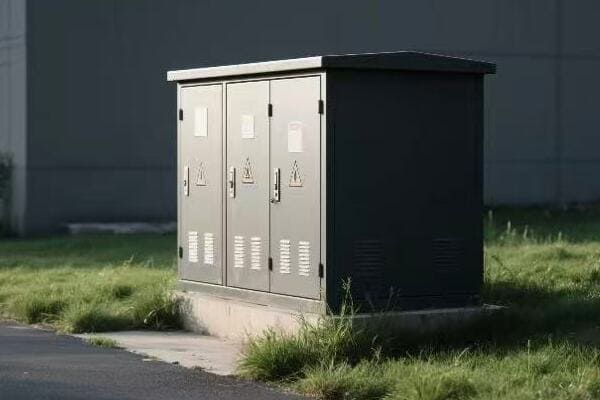
Exploring the Components of a Transformer Box
Let’s dive into the key parts inside a transformer box and how they function:
1. The Transformer Core
The core is the heart of the transformer:
- Made of thin, laminated sheets of silicon steel
- Provides a path for magnetic flux
- Shapes can vary (e.g., core-type or shell-type)
I once used a simple demonstration to explain the core’s function. I wrapped a wire around a nail and connected it to a battery. The nail became magnetized, showing how electric current creates a magnetic field in the core.
2. Windings
Transformers have two sets of windings:
- Primary Winding: Connected to the incoming high-voltage power
- Secondary Winding: Delivers the stepped-down voltage
- Made of insulated copper or aluminum wire
The relationship between these windings determines the voltage change. Here’s a simple formula:Vp / Vs = Np / Ns
Where:
- Vp = Primary voltage
- Vs = Secondary voltage
- Np = Number of turns in primary winding
- Ns = Number of turns in secondary winding
3. Insulating Medium
Transformers use either oil or air for insulation:
- Oil-filled: Better cooling and insulation, used in larger units
- Dry-type: Uses air and solid insulation, safer for indoor use
4. Cooling System
Cooling is crucial for efficient operation:
- Oil-filled units use the oil for cooling
- Larger units may have radiators or fans
- Dry-type units rely on air circulation
5. Bushings
Bushings are the connection points:
- Allow electrical connections to enter and exit the transformer
- Insulated to prevent arcing
6. Protective Devices
Safety components include:
- Fuses or circuit breakers
- Pressure relief devices
- Temperature monitors
Here’s a table summarizing the key components:
| Component | Function | Importance |
|---|---|---|
| Core | Magnetic flux path | Enables energy transfer |
| Windings | Voltage transformation | Determines voltage change |
| Insulation | Electrical isolation | Prevents short circuits |
| Cooling System | Heat management | Ensures efficient operation |
| Bushings | Electrical connections | Allows safe power transfer |
| Protective Devices | Safety and monitoring | Prevents damage and failures |
In my experience, understanding these components is crucial for effective transformer management. I recall a project where we were troubleshooting a faulty transformer. By methodically checking each component, we identified a problem with the insulation that wasn’t apparent from external symptoms.
One interesting aspect of transformer design is the balance between efficiency and size. In urban areas with limited space, we often need to use more compact designs. This might involve using higher-grade core materials or more efficient cooling systems to maintain performance in a smaller package.
The choice of insulating medium is another critical decision. While oil-filled transformers are more common in large outdoor units, dry-type transformers are gaining popularity, especially in environmentally sensitive areas. I worked on a project near a water source where we opted for dry-type units to eliminate the risk of oil leaks.
Advancements in materials science are also changing transformer design. For instance, amorphous metal cores, while more expensive, can significantly reduce energy losses. In one energy-efficiency project, we replaced old transformers with these high-efficiency models, resulting in substantial long-term energy savings.
The protective devices in transformer boxes are becoming increasingly sophisticated. Modern units often include smart monitoring systems that can detect potential issues before they become critical. This predictive maintenance approach has revolutionized how we manage transformer fleets, allowing for more efficient and proactive maintenance schedules.
Understanding the inner workings of transformer boxes helps us appreciate the engineering that goes into these crucial components of our power infrastructure. Each part plays a vital role in ensuring we have safe, reliable electricity in our homes and businesses.
Types and Locations: Understanding Different Transformer Box Configurations?
Have you ever noticed that not all electrical transformer boxes look the same? The variety in shapes, sizes, and locations of these boxes isn’t random. Each configuration serves a specific purpose in our power distribution system. But what are these different types, and why are they placed where they are?
Electrical transformer boxes come in various configurations, including pole-mounted, pad-mounted, and vault-type. Their design and location depend on factors like voltage levels, environmental conditions, and urban planning considerations. Understanding these types helps in recognizing their role in different settings.
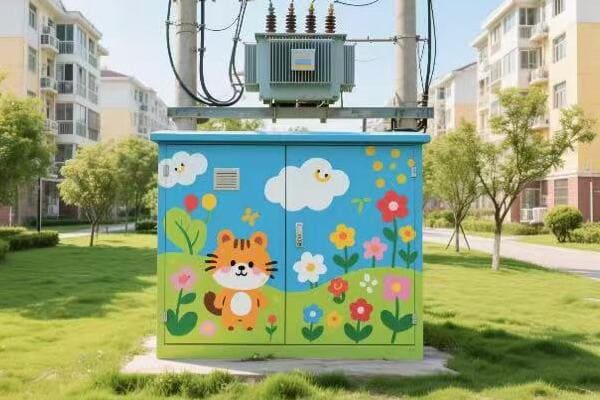
Exploring Transformer Box Types and Locations
Let’s break down the main types of transformer boxes and where you might find them:
1. Pole-Mounted Transformers
These are the most common in many areas:
- Mounted on utility poles
- Typically used in residential areas
- Handle voltages up to about 34,500 volts
I remember a project in a rural area where pole-mounted transformers were the best option due to their cost-effectiveness and ease of installation in areas with overhead power lines.
2. Pad-Mounted Transformers
These are becoming more common, especially in newer developments:
- Installed on concrete pads at ground level
- Often used in residential and light commercial areas
- Can handle higher voltages than pole-mounted units
3. Vault-Type Transformers
These are used in dense urban areas:
- Installed underground in vaults
- Common in city centers and high-rise buildings
- Can handle very high voltages and capacities
4. Submersible Transformers
Designed for flood-prone areas:
- Can operate while submerged
- Used in areas with high water tables or flood risks
Here’s a comparison table of these transformer types:
| Type | Typical Location | Voltage Range | Advantages |
|---|---|---|---|
| Pole-Mounted | Residential areas | Up to 34.5 kV | Cost-effective, easy maintenance |
| Pad-Mounted | Suburban areas | Up to 35 kV | Aesthetically pleasing, safer |
| Vault-Type | Urban centers | Up to 35 kV | Space-saving, protected from elements |
| Submersible | Flood-prone areas | Up to 35 kV | Operable in flooded conditions |
The choice of transformer box type often depends on various factors. In one urban redevelopment project I worked on, we transitioned from pole-mounted to pad-mounted transformers. This not only improved the area’s aesthetics but also allowed for easier maintenance access.
Location considerations go beyond just aesthetics or convenience. In areas prone to severe weather, we often opt for more robust designs. I recall a coastal project where we used specially designed pad-mounted transformers with enhanced corrosion resistance to withstand the salt air.
Urban planning plays a significant role in transformer box placement. In dense city areas, underground vault-type transformers are often the only viable option due to space constraints. However, these require careful planning for ventilation and access.
Environmental factors also influence transformer box selection. In environmentally sensitive areas, we might choose dry-type transformers over oil-filled ones to minimize the risk of contamination in case of a leak.
The trend towards renewable energy integration is also affecting transformer box design and placement. In areas with high solar panel adoption, we’re seeing more bi-directional transformers that can handle power flow in both directions.
Another interesting development is the use of modular transformer boxes. These allow for easier upgrades and replacements as power needs change. In rapidly growing areas, this flexibility can be a significant advantage.
Safety considerations are paramount in transformer box placement. For pad-mounted units in public areas, we implement various security measures to prevent unauthorized access while still allowing for emergency response.
Understanding the types and locations of transformer boxes helps us appreciate the thought and planning that goes into our power distribution systems. Each type has its place in ensuring we have reliable, efficient, and safe electricity delivery in various environments.
Safety First: Precautions and Best Practices Around Transformer Boxes?
Have you ever wondered about the safety of those electrical boxes in your neighborhood? While transformer boxes are designed to be safe, they still contain high-voltage equipment. Understanding the proper precautions around these boxes is crucial for public safety. But what exactly should you know to stay safe?
Safety around transformer boxes involves maintaining a safe distance, avoiding tampering, and reporting any damage or suspicious activity. Key precautions include never touching or opening the boxes, keeping the area clear of debris, and educating children about potential dangers. Proper awareness can prevent accidents and ensure public safety.
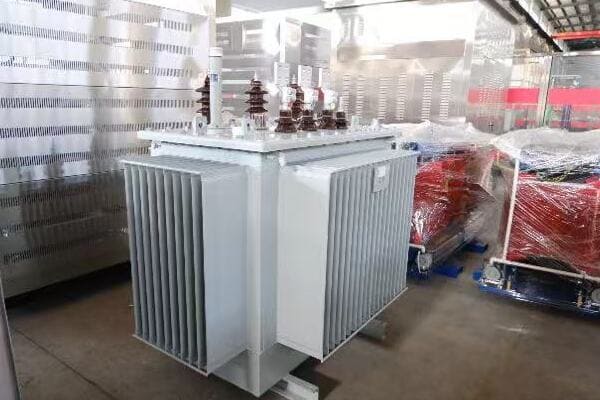
Essential Safety Precautions for Transformer Boxes
Let’s explore the key safety measures and best practices around transformer boxes:
1. Maintain a Safe Distance
- Stay at least 3 meters (10 feet) away from transformer boxes
- Never climb on or sit near them
I once witnessed a close call where a child was playing near a transformer box. It reinforced the importance of educating the community about these dangers.
2. Never Touch or Open
- Transformer boxes should only be opened by qualified personnel
- Even the exterior can be energized under fault conditions
3. Report Damage or Suspicious Activity
- Contact your local utility company if you notice:
- Unusual noises
- Oil leaks
- Physical damage
- Signs of tampering
4. Keep the Area Clear
- Don’t plant trees or shrubs too close to transformer boxes
- Ensure easy access for utility workers
5. Be Cautious During Floods
- Stay away from submerged transformer boxes
- Water can conduct electricity
Here’s a table summarizing key safety dos and don’ts:
| Do | Don’t |
|---|---|
| Report damage | Touch or open the box |
| Keep a safe distance | Plant vegetation too close |
| Educate others about safety | Store items on or against the box |
| Call utility for concerns | Attempt repairs yourself |
| Clear snow carefully | Use it as a play area |
In my years working with electrical systems, I’ve seen the consequences of safety negligence. One incident that stands out involved a landscaper who accidentally damaged a pad-mounted transformer while digging. It resulted in a power outage and could have been much worse. This experience underscores the importance of awareness and caution around these facilities.
Public education is crucial for transformer box safety. In one community project, we implemented a school outreach program to teach children about electrical safety. The program included age-appropriate lessons and even a mascot to make the message more engaging.
For homeowners and businesses near transformer boxes, we often provide guidelines on landscaping and snow removal. Proper clearance is essential not just for safety but also for maintenance access. I recall a situation where overgrown vegetation delayed an emergency repair, highlighting the importance of keeping these areas clear.
Emergency preparedness is another critical aspect of transformer box safety. In areas prone to flooding, we work with local emergency services to develop response plans. This includes protocols for dealing with submerged transformers and ensuring public safety during flood events.
The rise of electric vehicles has introduced new considerations for transformer box safety. In areas with high EV adoption, we’re seeing increased loads on residential transformers. This has led to new guidelines for EV charging installations to prevent overloading and potential safety issues.
Vandalism and theft are unfortunately common issues with transformer boxes. We’ve implemented various security measures, from tamper-proof designs to surveillance systems in high-risk areas. However, community vigilance remains one of the most effective deterrents.
Lastly, it’s important to address the misconceptions about EMF (Electromagnetic Fields) from transformer boxes. While these boxes do emit EMFs, the levels are generally well below safety limits at the typical distances people maintain from them. We often conduct EMF measurements to reassure concerned residents.
By following these safety precautions and best practices, we can ensure that transformer boxes continue to serve their vital role in our power distribution system without posing undue risks to the public. Remember, when it comes to electrical equipment, it’s always better to err on the side of caution.
Maintenance and Efficiency: Keeping Transformer Boxes in Optimal Condition?
Have you ever wondered how those electrical transformer boxes in your neighborhood stay functional year after year? Proper maintenance is key to their longevity and efficiency. But what goes into keeping these crucial components of our power grid in top shape?
Maintaining transformer boxes involves regular inspections, timely repairs, and efficiency upgrades. Key activities include checking for oil leaks, monitoring temperature, cleaning cooling systems, and updating insulation. Proper maintenance ensures reliable power distribution, extends equipment life, and improves overall energy efficiency.
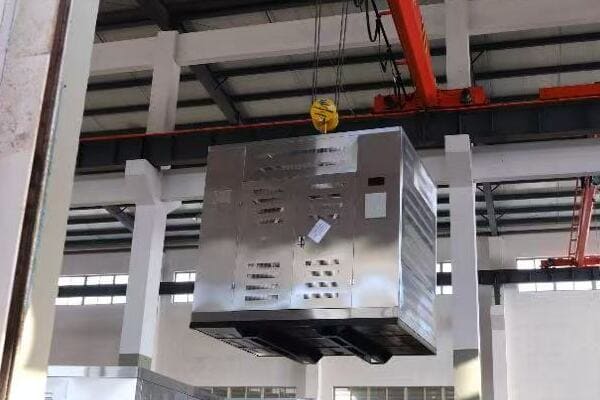
Essential Maintenance and Efficiency Practices
Let’s explore the key aspects of maintaining and optimizing transformer boxes:
1. Regular Inspections
- Visual checks for damage or leaks
- Thermal imaging to detect hot spots
- Oil level and quality checks
I once discovered a small oil leak during a routine inspection that could have led to a major failure if left unchecked. This experience reinforced the importance of regular, thorough inspections.
2. Cleaning and Cooling System Maintenance
- Clearing debris from cooling fins
- Cleaning or replacing air filters in dry-type units
- Ensuring proper oil circulation in oil-filled transformers
3. Electrical Testing
- Insulation resistance tests
- Turn ratio tests
- Power factor testing
4. Load Management
- Monitoring and balancing loads
- Upgrading capacity when necessary
5. Efficiency Upgrades
- Replacing old units with high-efficiency models
- Implementing smart monitoring systems
Here’s a table outlining a basic maintenance schedule:
| Maintenance Task | Frequency | Importance |
|---|---|---|
| Visual Inspection | Monthly | High |
| Oil Testing | Annually | Critical |
| Thermal Imaging | Quarterly | High |
| Electrical Testing | Every 3-5 years | Critical |
| Load Assessment | Ongoing | High |
In my experience, proactive maintenance is key to preventing unexpected failures. I recall a project where we implemented a comprehensive maintenance program for a utility company. Within two years, we saw a 40% reduction in transformer-related outages.
One often overlooked aspect of transformer maintenance is the impact of environmental factors. In coastal areas, for instance, salt air can accelerate corrosion. I worked on a project where we had to develop a special maintenance routine, including more frequent cleaning and application of protective coatings, to combat this issue.
Efficiency improvements can have a significant impact on both performance and operating costs. In one case, we replaced a group of older transformers with new, high-efficiency models. The energy savings alone paid for the upgrade within five years, not to mention the improved reliability.
Load management is becoming increasingly important, especially with the growing adoption of electric vehicles. I’ve been involved in projects where we’ve had to upgrade residential transformers to handle the increased load from EV charging. Proper load monitoring and timely upgrades are crucial to prevent overloading and potential failures.
The integration of smart technology is revolutionizing transformer maintenance. In recent projects, we’ve installed sensors that provide real-time data on transformer health. This allows for predictive maintenance, where potential issues can be addressed before they lead to failures.
Another important consideration is the management of transformer oil. Regular oil testing can reveal a lot about the health of a transformer. I remember a case where dissolved gas analysis of the oil indicated an developing internal fault, allowing us to address the issue before it caused a failure.
Noise reduction is an often-overlooked aspect of transformer maintenance, especially in residential areas. We’ve implemented various noise reduction techniques, from improved insulation to active noise cancellation systems, to address community concerns.
Lastly, it’s crucial to consider the end-of-life management of transformer boxes. Proper disposal or recycling of old units, especially those containing oil, is essential for environmental protection. I’ve been involved in developing recycling programs that recover valuable materials from decommissioned transformers.
Effective maintenance and efficiency practices not only extend the life of transformer boxes but also contribute to a more reliable and efficient power distribution system. By staying proactive and embracing new technologies, we can ensure these critical components continue to serve our communities effectively for years to come.
Conclusion
Electrical transformer boxes are crucial components of our power distribution system. They safely step down voltage for local use, come in various types for different settings, and require careful maintenance. Understanding their function, safety precautions, and maintenance needs helps us appreciate and protect these vital parts of our electrical infrastructure.
Recent Post
Quick Message
Request A free quote
We'd like to work with you
- +86 15558785111
- chbebgroup@chbebpower.com
- +86 15558785111
What We Do
CHINA BEI ER BIAN (CHBEB) GROUP, with 218 million in registered capital, originated from Beijing Beierbian Transformer Group. Headquartered in Beijing for R&D, it operates major production bases in Nanjing and Yueqing, producing high-quality products.
Latest Post
Latest Product
Contact Us
- +86 15558785111
- chbebgroup@chbebpower.com
- +86 15558785111
BeiJing
No 3,RongJing East Road,BeiJing Economic Technological Development Area,BeiJing,China
JiangSu
No 7️Xiangfeng Road,Jiangning,NanJing,JiangSu,China
WenZhou
No.211, Wei 16 Road, Industrial Zone, Yueqing, Wenzhou, Zhejiang, China.
XiangYang Industrial Zone ,YueQing,WenZhou,ZheJiang,China
